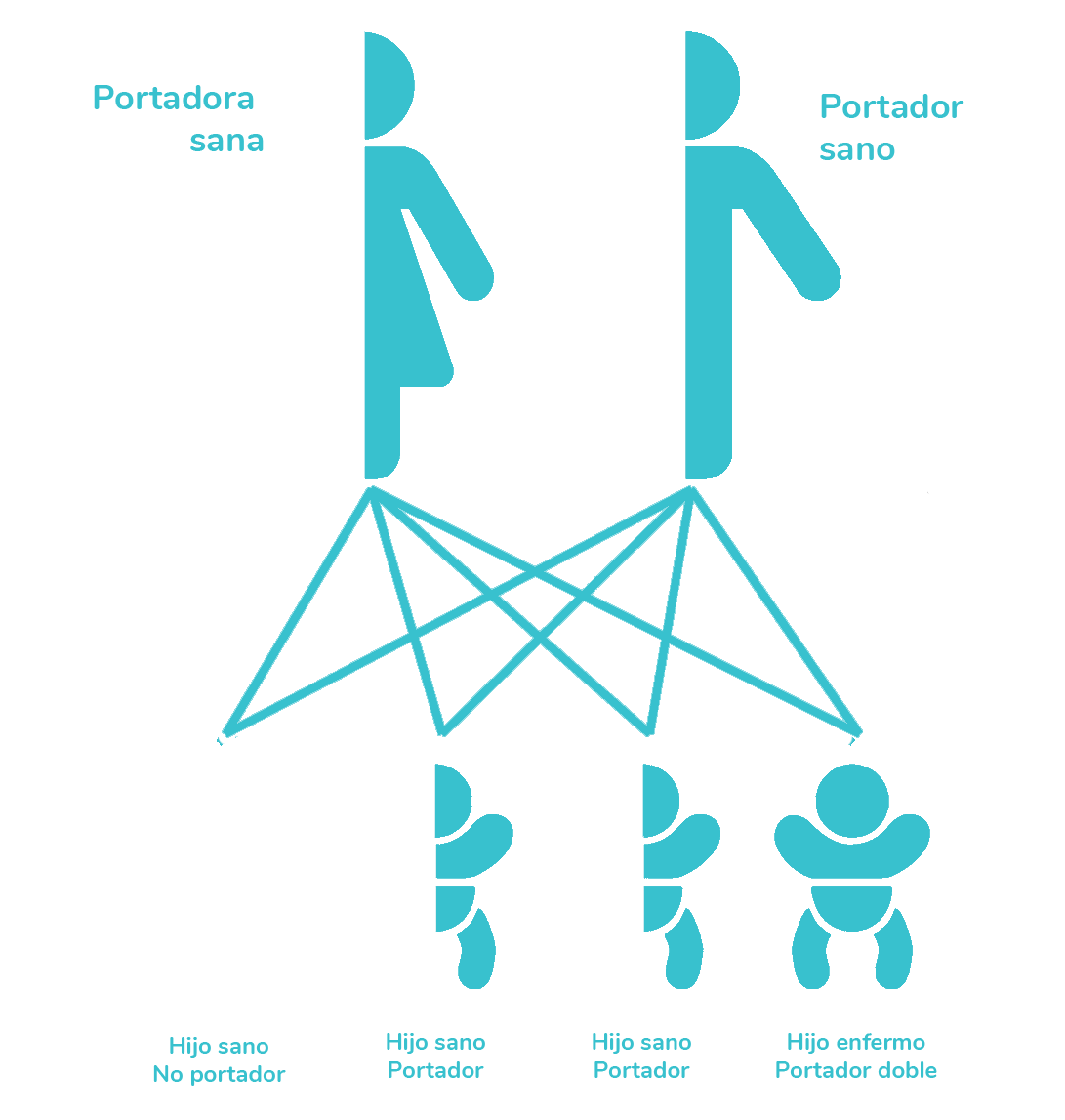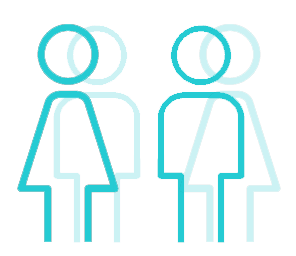Genetic Matching
Genetic Matching
What is it
Genetic matching compares the CARRIER STUDY of two people, a woman and a man. In our case, a semen donor with a recipient or an oocyte donor with the recipient’s male partner. When a double donation is made, the sperm donor and the oocyte donor are compared.
What is it
Genetic matching compares the CARRIER STUDY of two people, a woman and a man.
In our case, a semen donor with a recipient or an oocyte donor with the recipient’s male partner.
When a double donation is made, the sperm donor and the oocyte donor are compared.
What is it for?
Genetic matching reduces the probability of suffering from an autosomal recessive genetic disease.
When a recipient provides us with the Carrier Study, either her or her partner’s, we will study the genes that are altered. What we will do is select a donor (semen or oocytes, as the case may be) that does not have these genes altered. For example, if a recipient is a carrier of a pathogenic variant of the PKHD1 gene (autosomal recessive polycystic kidney disease), the sperm donor cannot have that gene altered.
What is it for?
Genetic matching reduces the probability of suffering from an autosomal recessive genetic disease.
Cuando una receptora nos aporta el Estudio de portadores, bien suyo o de su pareja, estudiaremos los genes que tiene alterados. Lo que haremos es seleccionar un donante (de semen u ovocitos, según el caso) que no tenga alterados esos génes. Por ejemplo, si una receptora es portadora de una variante patogénica del gen PKHD1 (poliquistosis renal autosómica recesiva) el donante de semen no puede tener alterado ese gen.
What are they
Genetic diseases
Autosomal Recessive
What are they
Genetic diseases
Autosomal Recessive
A person’s GENES are always presented in pairs, one gene in turn coming from the mother’s pair and the other of the father. Sometimes it happens that these inherited genes are abnormal (pathogenic variant), and it may even happen that both genes are. Normally these abnormal genes cannot perform their coding function.
In dominant genetic diseases it is only necessary to inherit an abnormal gene, either from the mother or the father, to suffer from the disease and this is because the function of the abnormal gene cannot be supplied by the other gene of the pair. In recessive genetic diseases, the two inherited genes must be abnormal to cause the disease since the function of an abnormal gene is replaced by the other non-abnormal.
People with only one defective gene in the pair are considered carriers and as we have already seen, in the case of genetic diseases recessive do not suffer from the disease. However, this person can transmit the defective gene to the offspring, who will again be a carrier, non-carrier, or diseased depending on whether the other inherited gene is normal or abnormal.

A person’s GENES are always presented in pairs, one gene in turn coming from the mother’s pair and the other of the father. Sometimes it happens that these inherited genes are abnormal (pathogenic variant), and it may even happen that both genes are. Normally these abnormal genes cannot perform their coding function.
In dominant genetic diseases it is only necessary to inherit an abnormal gene, either from the mother or the father, to suffer from the disease and this is because the function of the abnormal gene cannot be supplied by the other gene of the pair. In recessive genetic diseases, the two inherited genes must be abnormal to cause the disease since the function of an abnormal gene is replaced by the other non-abnormal.
People with only one defective gene in the pair are considered carriers and as we have already seen, in the case of genetic diseases recessive do not suffer from the disease. However, this person can transmit the defective gene to the offspring, who will again be a carrier, non-carrier, or diseased depending on whether the other inherited gene is normal or abnormal.


